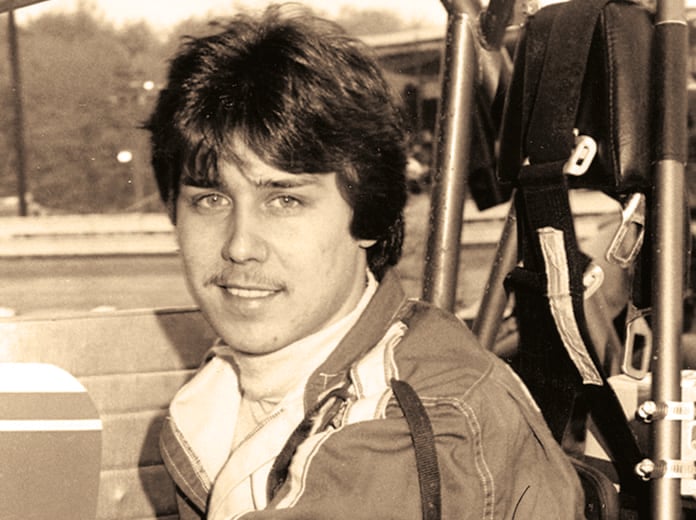Throughout the 1980s, Bobby Davis Jr. was transformed from a teenaged sprint car phenom to one of the most accomplished drivers in the nation.
He won in the famed Weikert Beefmobile in Pennsylvania; he won races throughout the country with the World of Outlaws; and in 1989 he capped the decade by winning the Outlaws championship with famed car owner Casey Luna.
Soon after — while at the peak of his career — Davis walked away from racing, never to return. He first stepped away from full-time traveling, dramatically reducing his schedule to race near his Memphis home. He ultimately took his last sprint car ride as a part-time racer in 1995. He was just 32 years old.
In the years since, Davis has been virtually invisible to the racing world. He recently re-emerged on the stage at the 25th annual National Sprint Car Hall of Fame induction ceremony, taking his place among the sport’s greatest figures.
So what happened to Bobby Davis Jr.? Why did he step away from the sport while still a young man, at the peak of his ability?
“It was several different things, you might say,” he admitted. “I wanted to go NASCAR racing and the last couple of years I was still racing I was just running part time in the sprint car, trying to hit the big races.
“I was running the sprint car, yet still trying to hang out with the NASCAR guys to get something lined up, get something going. When that kind of fell through, I felt like if I couldn’t get a top-notch deal I wasn’t going to do it.”
Just as today, breaking into NASCAR in the early 1990s was a difficult proposition. It meant haunting the garage area, constantly networking and being devoted to the process.
Davis began to realize he wasn’t making progress toward his NASCAR goals. Soon a conversation with his father changed the direction of his life.
Davis had grown up around two things: racing and the electrical business. His father — Bobby Sr. — owned Bobby Davis Electric in Memphis and fielded some of the top sprint cars in the region.
“My father offered me an opportunity with the electrical company and I started to weigh things out,” he said. “I had been racing for several years…that road gets tough on you, you know. Up and down it all the time.
“His offer was for me to go to work for him and take over the business and that’s what we did.”
Just like that, Davis disappeared from the racing scene. He immersed himself into his new world — operating a successful business.
“When I quit, I quit,” he said. “That was the only way I could walk away from it. Racing had been my life for 15 years, 24 hours a day, seven days a week, 365 days a year. I still had my own race car there at the end and when I sold it I sold everything related to the car. The only thing I kept was my tools and my shop.
“We just kept on working, but in a different direction,” he continued. “The electrical work was 24/7 also, because we were on call all the time. All we knew was work. That was the best way, really, because it kept my mind occupied. I didn’t have time to miss racing because I jumped right into the electrical business and never looked back.”
Davis was soon absorbed into the non-stop work life of a small business manager. He got to know his customers, his work force and his suppliers.
Click below to keep reading.
